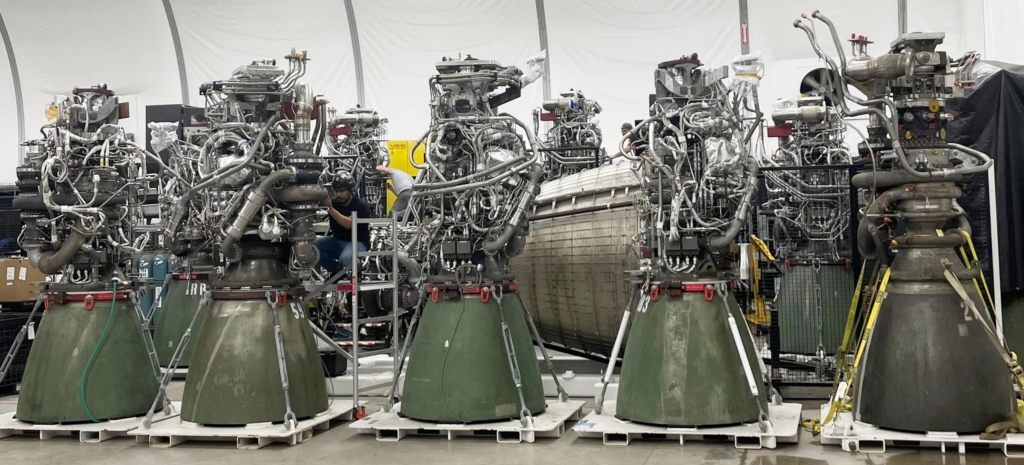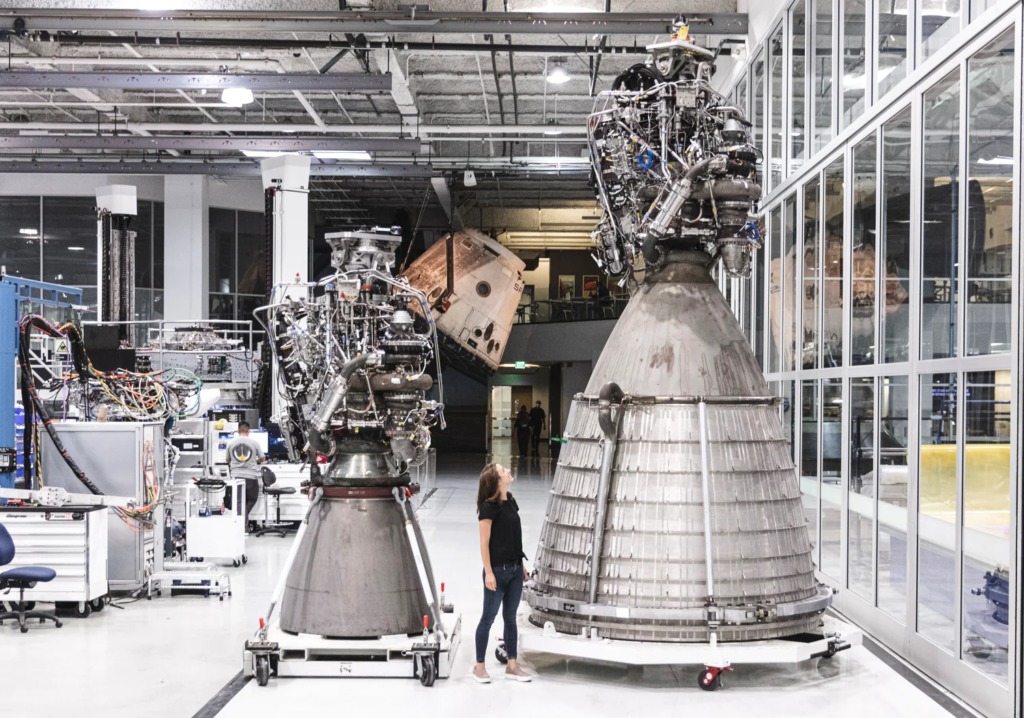
How SpaceX’s Raptor Engine Has Changed Over Time
A rocket engine is core to any space program and has the ability to single handily change the capabilities of a launch vehicle. For years now SpaceX has been consistently working on the Raptor engine in order to increase its power as well as improve the production process. Recently we learned more about the newest version of this engine, Raptor V3.
Information came out regarding impressive test results after SpaceX fired the upgraded engine at the Mcgregor Test Stand. This is a big deal as Raptor is a major part of the Starship program and will be tested once again not too long from now. The more SpaceX can safely increase the power of the Raptor engines, the more Starship will be capable of for any type of mission.
In reality, Raptor upgrades have been happening for many years with different improvements being announced every once in a while. Here I will go more in-depth into the new Raptor V3 test information, the timeline of this engine, how this impacts Starship’s future, and more.
Raptor V3 Test

The Raptor engine is a reusable methane-oxygen staged-combustion engine that powers the Starship system and has twice the thrust of the Falcon 9 Merlin engine. All the way back in 2012, SpaceX publicly announced concept work on a rocket engine that would be “several times as powerful as the Merlin 1 series of engines. Since then, they have been constantly working on and testing the engine.
Only two days ago Elon Musk tweeted saying, “Raptor V3 just achieved 350 bar chamber pressure (269 tons of thrust). Congrats to @SpaceX propulsion team! Starship Super Heavy Booster has 33 Raptors, so total thrust of 8877 tons or 19.5 million pounds.” This included the relative chart showing the timeline and chamber pressure of the engine test. When asked if this test took place at the Mcgregor test site Musk responded, “Yeah. To be frank, we did not expect the engine to survive a full duration run at that pressure. It is uncharted territory.”
This new chamber pressure and thrust means Starship despite it being the biggest rocket in the world would have a 1.77 thrust to weight ratio at liftoff. Those types of numbers are more commonly seen for smaller rockets, not massive ones.
In addition to work on the engine performance, SpaceX has also been making impressive progress on the engines production process. Only weeks ago Musk was quoted saying, we even “Slowed down Raptor engine production “because we’ve got more Raptors than we know what to do with.” This helps put in perspective the amount of work going into this hardware.
Early last year, SpaceX help a starship update that focused a lot on the Raptor engines and different changes that were made. While Raptor V1 produced around 185 tons of thrust, V2 was able to produce around 230 tons, now in 2023 they are producing 269 tons. In addition, during the update last year, Musk mentioned that he was confident they would get V2 thrust up to 250 tons. During the presentation, they showed a photo of both engines next to each other and even had two Raptor versions side by side in the background. On Raptor V1 you can see a labyrinth of plumbing and parts surrounding the entire engine in a very complex design. Musk mentioned that V1 looks kinda like a “Christmas tree, spaghetti pile”, “while V2 is greatly simplified, while also increasing thrust at the same time.” In this side-by-side comparison, it becomes very clear the major improvements made. This simplification not only improves the efficiency of the engine, but also helps SpaceX with the cost and time to produce Raptor V2. Elon even pointed out that V2 costs about half as much as V1 even though it’s much more powerful.
While the thrust improvements are great for SpaceX and the Starship program, it’s very likely that quite a few other features of the new V3 Raptor has changed as well. The power is important but so is the reliability, reliability, and production aspects as well. Not long from now, we can hope to receive more updates on the new engine and exactly what its capable of.
Impact On Starship

With new information coming out about Raptor V3, it brings up the question of when will this be used on Starship. During the rocket’s first test flight, we saw a few different problems with the engines that had an effect on the overall launch. In this case, with the rocket utilizing 33 engines on the first stage alone, they have to be very reliable and consistent for successful launches to be possible.
As for the next launch, the most probable outcome is SpaceX using the Raptor engines already installed on B9. These engines are plenty capable and could still provide great results on the second orbital test flight. Down the line, however, we can expect new engines to be implemented. It’s important to point out that while SpaceX just got some incredible test results with the Raptor V3, they are still early in development and testing. Elon even commented how they didn’t expect the engine to survive. It will take quite a bit more testing before they are ready to use these engines on an actual launch.
On the bright side, SpaceX has a lot of experience with testing and upgrading the Raptor engine hardware. Initial development testing of Raptor methane engine components was done at NASA’s Stennis Space Center, where SpaceX added equipment to the existing infrastructure to support liquid methane engine testing. The development Raptor engine discussed in the October 2013 time frame relative to Stennis testing was designed to generate more than 2,900 kN (661,000 lbf) vacuum thrust.
By early 2016, SpaceX had constructed a new engine test stand at their McGregor test site in central Texas for Raptor testing. In 2021 SpaceX announced that they would be building a second production facility for Raptor engines, this one in south Texas near the existing rocket engine test facility. At the time it was reported in that SpaceX would “break ground soon” and that the facility will concentrate on the serial production of Raptor 2, while the California facility will produce Raptor Vacuum and new/experimental Raptor designs. The new facility is expected to eventually produce 800 to 1000 rocket engines each year. SpaceX aims at a lifetime of 1000 flights for Raptor. In 2019 the (marginal) cost of the engine was stated to be approaching $1 million. SpaceX plans to mass-produce up to 500 Raptor engines per year, each costing less than $250,000.
Moving on to late 2021, SpaceX said that scaling Raptor production to support the frequent Starship test program planned for 2022 was “currently the biggest constraint on how many vehicles they could make” and that failing to achieve a flight rate of at least once every two weeks by late 2022 would open up the possibility of bankruptcy for SpaceX. The reason given was that Starship orbital launch capability is necessary to deliver the next generation Starlink satellites needed to operationalize the massively capital-intensive Starlink broadband internet constellation.
Not only are these new Raptor engines crucial for the first stage of Starship but also the upper stage. The Starship upper stage features 3 Sea Level Raptor engines and 3 Vacuum optimized Raptor engines. Raptor Vacuum (RVac) is a similar design to the Raptor engine, but features a larger exhaust section and a larger expansion nozzle to maximize the engine’s efficiency in space. Specifically, Raptor Vacuum (RVac) is a variant of Raptor with an extended, regeneratively-cooled nozzle for higher specific impulse in the vacuum of space. While the vacuum-optimized Raptor engine is aiming for a specific impulse of ~380 s (3,700 m/s), the v1.0 Raptor vac design to support early Starship development has been made more conservative and is projecting a specific impulse of only 365–370 s (3,580–3,630 m/s), intentionally decreasing engine performance to obtain test engines sooner. In addition, Raptor Vacuum v1 will have a smaller engine nozzle to avoid flow separation when the engine is fired at sea-level atmospheric pressure. A full-duration test of version 1 of the Raptor Vacuum engine was completed in September 2020 at the SpaceX development facility in McGregor, Texas. Hopefully, on the next Starship test flight we can see these different upper stage engines in action.
In terms of design, the Raptor engine is powered by subcooled liquid methane, and subcooled liquid oxygen in a full-flow staged combustion cycle. This is a departure from the simpler “open-cycle” gas generator system and LOX/kerosene propellants that the current Merlin engines use. Also, the RS-25 engines (which were first used on the Space Shuttle) use a simpler form of a staged combustion cycle, as do several Russian rocket engines, including the RD-180 and the RD-191. The Raptor engine is designed for the use of deep cryogenic propellants—fluids cooled to near their freezing points, rather than using the cryo-propellants at their boiling points as it is more typical for cryogenic rocket engines. The use of subcooled propellants increases propellant density to allow more propellant mass to be stored within the vehicle’s tanks. Engine performance is also increased with subcooled propellants. Specific impulse is increased, and the risk of cavitation at inputs to the turbopumps is reduced due to the higher propellant fuel mass flow rate per unit of power generated. All of which important factors in this new engine’s performance and future.
Conclusion
SpaceX just revealed new details on the Raptor 3 engine. After a lot of work and testing on Raptor 2, new improvements and more thrust is already available. In reality, some more tests and development is needed first, but once complete, Starship will be even more capable. We will have to wait and see how it progresses and the impact it has on the space industry.
